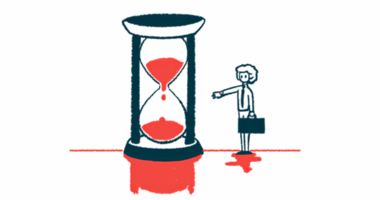Dos and don’ts for exercising with hemophilia
Last updated June 10, 2025, by Roslyn Marano

Hemophilia is a rare bleeding disorder where the body lacks certain clotting factors, making it harder to stop bleeding. One of the most serious concerns is internal bleeding into joints, which over time can cause pain, swelling, and permanent damage.
Because of this, exercise might feel risky, but studies show that regular, guided movement can help protect joints, reduce the risk of injuries, build strength, and improve overall health in people with hemophilia.
With your doctor’s guidance and a thoughtful plan, exercising with hemophilia can be safe and beneficial. The key is pairing safe exercises for hemophilia with a sustainable and enjoyable routine.
Smart habits to support safe exercise
Creating a safe and consistent routine can help reduce the risk of injury and build confidence. The following hemophilia exercise tips can guide you in developing a sustainable fitness plan that works with your treatment, not against it.
Get a personalized activity plan
A personalized plan from your hemophilia treatment center or physical therapist helps tailor activity to your needs and hemophilia type.
Professionals trained in physical therapy for hemophilia consider joint history, previous bleeds, and treatment schedules. Some centers even offer formal fitness evaluations for people with bleeding disorders.
Focus on low-impact, joint-friendly activities
Low-impact exercises for joint health, such as swimming, walking, cycling, and resistance band workouts, are generally safer and can improve cardiovascular health and support joint stability.
Yoga and tai chi may also improve balance, posture, and flexibility.
Warm up and cool down
Always warm up before and cool down after exercise. Warming up gradually increases circulation and loosens muscles. Cooling down promotes recovery and reduces soreness. Even five minutes of light stretching or movement can make a difference.
Know your body’s signals
Listen to your body. Joint pain, warmth, or swelling may signal an internal bleed. Stop the activity immediately if you notice symptoms.
Keeping an activity and symptom journal or using self-monitoring tools like mobile apps and activity trackers can help you and your care team identify patterns and prevent injuries.
Wear protective gear
Practicing hemophilia exercise safety by wearing supportive shoes, padded clothing, and joint braces can also be helpful.
Protective gear like knee or elbow pads can be especially beneficial for younger children or anyone doing sports or outdoor activities.
Time exercise with your treatment
Plan physical activity during peak treatment effectiveness, which is when clotting factors or other prescribed therapies are most active in the body. This timing is key for management and helps lower bleeding risk.
Things to avoid
While regular movement can offer big benefits, certain habits and activities may increase the risk of bleeding or injury for people with hemophilia, including skipping treatment, ignoring signs of a bleed, and more.
Skipping treatment
Never skip treatment before a workout. Engaging in physical activity without proper factor levels raises the risk of serious bleeds. Always follow your prescribed plan, especially before new or intense activities.
Ignoring signs of a bleed
Do not ignore joint pain, swelling, or a “tingling” sensation. These may be the early signs of a bleed and require rest, treatment, and possibly follow-up. Prompt care prevents long-term damage and supports faster recovery.
Participating in high-risk sports
Contact and collision sports — such as football, hockey, or wrestling — are activities to avoid with hemophilia unless cleared and adapted by your care team. These activities increase the risk of traumatic injury, even with protective gear.
Exercising with improper form
Using poor form or overexerting without conditioning can cause muscle tears or strain joints. Focus on proper posture and controlled movements. Work with a trainer or therapist experienced in bleeding disorders, if possible.
Comparing yourself to others
Avoid comparing your progress to others. Hemophilia severity and joint health vary from person to person. Set realistic goals and track your own progress to stay motivated and avoid injury.
Avoiding all activity
Avoiding exercise completely may feel safer, but it can weaken your muscles and increase stiffness, which makes your joints more vulnerable.
Staying active with hemophilia using safe routines can help prevent complications and support long-term joint function.
Tips for parents and caregivers
People living with hemophilia — both children and adults — can safely enjoy movement with the right planning and support.
Encouraging safe exercises for hemophilia, such as swimming, dancing, or gentle activities, can help improve strength, coordination, and confidence while protecting the joints.
To help make these exercises even safer, keep these hemophilia exercise tips in mind:
- Plan around treatment and schedule physical activity during times of peak treatment effectiveness to lower the risk of bleeds.
- Use age-appropriate resources, such as a child-friendly hemophilia workout guide or tailored adult routines, to help make exercise enjoyable.
- To support long-term joint protection, build lasting safety habits early, such as learning to spot signs of a bleed and wearing protective gear.
- Openly communicate with teachers, coaches, and the rest of your or your child’s support team to reinforce hemophilia exercise safety across all areas of daily life.
Hemophilia and physical activity can go hand in hand with the right guidance and precautions. By being safe and consistent, you can make movement a meaningful part of managing hemophilia and supporting your long-term health.
Hemophilia News Today is strictly a news and information website about the disease. It does not provide medical advice, diagnosis, or treatment. This content is not intended to be a substitute for professional medical advice, diagnosis, or treatment. Always seek the advice of your physician or other qualified health provider with any questions you may have regarding a medical condition. Never disregard professional medical advice or delay in seeking it because of something you have read on this website.
Recent Posts






